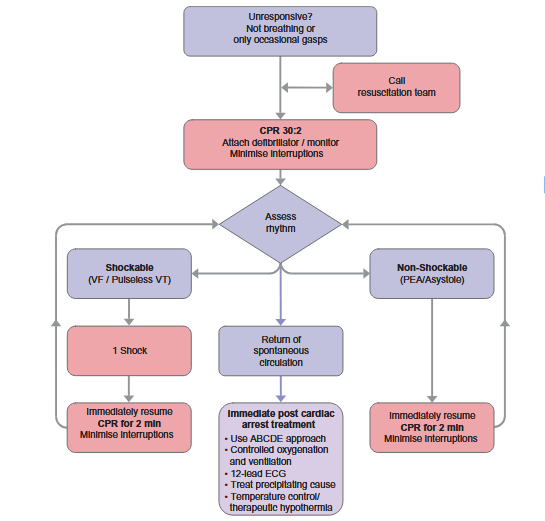Emergency Department Triage and Care Guide for Nurses
Emergency Department Triage and Care Guide for Nurses.
In the Emergency Department (ED), patients come in with many urgent issues. Nurses and midwives assess and prioritize care with urgency. They start treatment to lower morbidity and mortality. This requires strong clinical skills, quick decision-making, and a compassionate approach.
Guide for nurses and midwives in the Emergency Department. It covers:
Triage categories
Common surgical and medical emergencies
ABCDE/FGHHI assessment, based on Advanced Trauma Life Support principles.
1. Triage in Emergency Nursing
Triage means deciding which patients need care first. It focuses on how serious their illness or injury is. Accurate history-taking and physical assessment determine the triage category.
Triage Discriminators
These are key signs and symptoms used to assign triage categories:
Life threat
Hemorrhage
Pain
Conscious level
Temperature
Acuteness
Note: Only an experienced emergency nurse or midwife with triage training should perform nurse triage.
2. Steps in the Triage Process
Identify the problem.
Gather and analyze information.
Evaluate all possible actions and choose the best one.
Implement the chosen action.
Monitor and evaluate the outcomes.
3. Common Surgical Emergencies in the ED
Nurses must be prepared to assist in managing:
Neurological: Skull fractures, head injuries.
Cardiovascular: Abdominal or thoracic aortic aneurysms.
Respiratory: Traumatic chest injuries (flail chest, hemothorax, rib/sternal fractures).
Gastrointestinal: Appendicitis, cholecystitis, intestinal obstruction, perforated ulcer, abdominal trauma.
Genitourinary: Bartholin’s abscess, bladder/genital trauma.
Maxillofacial: Facial or jaw fractures/dislocations.
Musculoskeletal: Fractures/dislocations of limbs, spine, pelvis; blast and gunshot wounds.
Assessment for Abdominal Pain
ABCDE assessment
Urinalysis and culture
Blood tests (FBC, urea & electrolytes, LFTs if needed)
Abdominal X-ray
Ultrasound
CT or MRI scan if indicated
4. Common Medical Emergencies
These may include:
Neurological: Stroke, meningitis, seizures, altered consciousness.
Cardiovascular: Chest pain, myocardial infarction, cardiogenic shock, anaphylaxis, DVT.
Respiratory: Acute asthma attack, pneumonia, pulmonary embolism, pneumothorax.
Gastrointestinal: Peptic ulcer disease, pancreatitis, liver disease, gastroenteritis.
Genitourinary: UTI, pyelonephritis, renal colic, urinary retention, STIs.
Endocrine/Metabolic: Hypoglycemia, DKA, thyroid crisis, electrolyte imbalances.
Hematological: Hemophilia, sickle cell disease.
Skin: Burns, rashes, ulcers.
ENT: Epistaxis, tonsillitis, peritonsillar abscess.
Toxicology: Poisoning, drug/alcohol overdose.
5. Patient Assessment in the Emergency Department
Emergency nurses and midwives must assess patients rapidly, accurately, and continuously.
Key requirements:
Strong communication skills
Sound knowledge of anatomy and physiology
Understanding trauma mechanisms
Proficient assessment and critical thinking skills
6. Advanced Life Support (ALS) Approach
All ED patients should be assessed using the primary and secondary survey method.
Primary Assessment – ABCDE
A – Airway: Check if open, note patient color, ensure cervical spine support in trauma. B – Breathing: Rate, pattern, chest movement, oxygen saturation. C – Circulation: Pulse, BP, capillary refill, blood loss, urine output. D – Disability: Neurological status (AVPU), pupils, blood sugar. E – Exposure: Check for rashes, wounds, thrombosis
Secondary Assessment – FGHHI
F – Full set of vital signs: Temp, pulse, RR, BP, SpO₂, weight. G – Give comfort measures: Reassurance, dignity, comfort. H – History: Medical history, medications, allergies, last food/fluid intake. H – Head-to-toe assessment: Head, face, neck, chest, abdomen, pelvis, extremities. I – Inspect posterior surfaces: Check for bleeding, wounds, edema, bruising.
7. Advanced Trauma Life Support (ATLS)
The American College of Surgeons created ATLS. It highlights quick assessment and resuscitation during the “golden hour” after an injury.
ATLS Steps:
Preparation
Triage
Primary survey (ABCDE)
Resuscitation
Adjuncts to primary survey
Secondary survey (FGHHI)
Adjuncts to secondary survey
Ongoing monitoring and re-evaluation
Definitive care


Key Takeaway for Nurses
In the ED, your job is to spot emergencies fast. You’ll prioritize care and start interventions right away. This not only saves lives but also improves recovery outcomes.